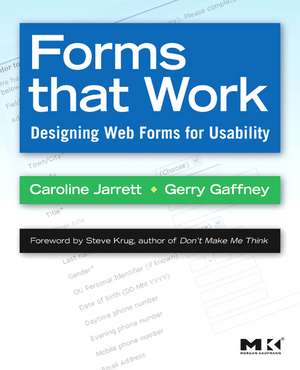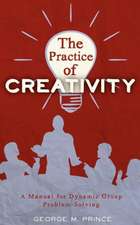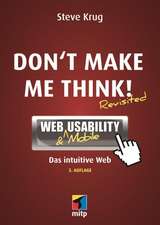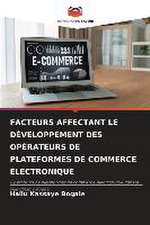Forms that Work: Designing Web Forms for Usability: Interactive Technologies
Autor Caroline Jarrett, Gerry Gaffney Cuvânt înainte de Steve Krugen Limba Engleză Paperback – 6 noi 2008
This book isn’t just about colons and choosing the right widgets. It’s about the whole process of making good forms, which has a lot more to do with making sure you’re asking the right questions in a way that your users can answer than it does with whether you use a drop-down list or radio buttons. In an easy-to-read format with lots of examples, the authors present their three-layer model - relationship, conversation, appearance. You need all three for a successful form - a form that looks good, flows well, asks the right questions in the right way, and, most important of all, gets people to fill it out. Liberally illustrated with full-color examples, this book guides readers on how to define requirements, how to write questions that users will understand and want to answer, and how to deal with instructions, progress indicators and errors.
This book is essential reading for HCI professionals, web designers, software developers, user interface designers, HCI academics and students, market research professionals, and financial professionals.
*Provides proven and practical advice that will help you avoid pitfalls, and produce forms that are aesthetically pleasing, efficient and cost-effective.
*Features invaluable design methods, tips, and tricks to help ensure accurate data and satisfied customers.
*Includes dozens of examples -- from nitty-gritty details (label alignment, mandatory fields) to visual designs (creating good grids, use of color).
*Foreword by Steve Krug, author of the best selling Don't Make Me Think!
Din seria Interactive Technologies
- 20%
 Preț: 310.79 lei
Preț: 310.79 lei - 34%
 Preț: 355.53 lei
Preț: 355.53 lei - 34%
 Preț: 244.47 lei
Preț: 244.47 lei - 38%
 Preț: 348.00 lei
Preț: 348.00 lei - 31%
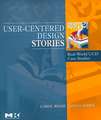 Preț: 306.16 lei
Preț: 306.16 lei - 20%
 Preț: 496.28 lei
Preț: 496.28 lei - 32%
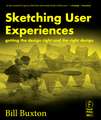 Preț: 229.80 lei
Preț: 229.80 lei - 32%
 Preț: 228.02 lei
Preț: 228.02 lei - 31%
 Preț: 275.36 lei
Preț: 275.36 lei - 31%
 Preț: 359.88 lei
Preț: 359.88 lei - 20%
 Preț: 594.99 lei
Preț: 594.99 lei - 20%
 Preț: 730.82 lei
Preț: 730.82 lei - 8%
 Preț: 227.94 lei
Preț: 227.94 lei - 21%
 Preț: 297.76 lei
Preț: 297.76 lei - 27%
 Preț: 412.82 lei
Preț: 412.82 lei - 20%
 Preț: 410.91 lei
Preț: 410.91 lei - 27%
 Preț: 258.72 lei
Preț: 258.72 lei - 20%
 Preț: 346.23 lei
Preț: 346.23 lei - 28%
 Preț: 210.27 lei
Preț: 210.27 lei
Preț: 291.56 lei
Preț vechi: 364.46 lei
-20% Nou
Puncte Express: 437
Preț estimativ în valută:
55.79€ • 58.14$ • 46.19£
55.79€ • 58.14$ • 46.19£
Carte disponibilă
Livrare economică 13-27 martie
Livrare express 27 februarie-05 martie pentru 34.51 lei
Preluare comenzi: 021 569.72.76
Specificații
ISBN-13: 9781558607101
ISBN-10: 1558607102
Pagini: 288
Ilustrații: Approx. 230 illustrations (250 in full color)
Dimensiuni: 191 x 235 x 13 mm
Greutate: 0.54 kg
Editura: ELSEVIER SCIENCE
Seria Interactive Technologies
ISBN-10: 1558607102
Pagini: 288
Ilustrații: Approx. 230 illustrations (250 in full color)
Dimensiuni: 191 x 235 x 13 mm
Greutate: 0.54 kg
Editura: ELSEVIER SCIENCE
Seria Interactive Technologies
Public țintă
HCI professionals, web designers, software developers, user interface designers, HCI academics and students, market research professionals, financial professionalsCuprins
Introduction: What is a form?
What is a form?
1. Persuading people to answer
Pick the right moment to ask a question
Think about relationship question by question
Follow three rules that that influence response rates
Think about who will answer your questions
Summary
Interlude: Registration forms: rules and suggestions
2. Gathering the right information
Find out why you need the information
Check if your organization already holds the information
Find out what others ask for
Summary: only ask for information that you need
Case study: conference registration form
3. Making questions easy to answer
How questions work
Make it easy to understand the question
Make it easy to find the answer
Judging the answer: avoiding privacy errors
Placing the answer: avoiding category errors
Summary: writing questions
Case study: avoiding choice points
4. Writing instructions
Writing instructions
Rewriting instructions in plain language
Cut the instructions that aren't needed
Move the instructions to where they are needed
A before- and after- example
Summary: Writing instructions
Interlude: help for forms
5. Choosing between drop-downs and other controls
Picking controls for your forms
How users expect controls to work
Use these six questions to choose the right control
Specialist controls may help
Think about the form as a whole
Summary: Providing the answer
Interlude: names and addresses
6. Making the form flow easily
Make the form flow easily
Use progress indicators
Avoid surprising users with sudden changes
Be gentle with errors
Say ‘thanks’ to close the conversation
Conversational flow – summary
Interlude: why we hate pop-ups
7. Taking care of the details
Taking care of the details
Where to put the labels compared to the fields
Colons at the end of labels?
Sentence or title case for labels?
How to indicate required fields
Choosing legible text: fonts and words
Summary
Interlude: serif or sans-serif
8. Making the form look easy
What makes a form look good
Make sure users know who you are: logos and branding
Make your form look tidy with grids
Make it look organized with grouping
Avoid two-column forms
Summary
Case study: an appearance makeover
9. Testing (the best bit)
We're passionate about usability testing
How to do really good usability testing of forms
Final message from this book
Appendices
Suggestions for further reading
References
Acknowledgements
What is a form?
1. Persuading people to answer
Pick the right moment to ask a question
Think about relationship question by question
Follow three rules that that influence response rates
Think about who will answer your questions
Summary
Interlude: Registration forms: rules and suggestions
2. Gathering the right information
Find out why you need the information
Check if your organization already holds the information
Find out what others ask for
Summary: only ask for information that you need
Case study: conference registration form
3. Making questions easy to answer
How questions work
Make it easy to understand the question
Make it easy to find the answer
Judging the answer: avoiding privacy errors
Placing the answer: avoiding category errors
Summary: writing questions
Case study: avoiding choice points
4. Writing instructions
Writing instructions
Rewriting instructions in plain language
Cut the instructions that aren't needed
Move the instructions to where they are needed
A before- and after- example
Summary: Writing instructions
Interlude: help for forms
5. Choosing between drop-downs and other controls
Picking controls for your forms
How users expect controls to work
Use these six questions to choose the right control
Specialist controls may help
Think about the form as a whole
Summary: Providing the answer
Interlude: names and addresses
6. Making the form flow easily
Make the form flow easily
Use progress indicators
Avoid surprising users with sudden changes
Be gentle with errors
Say ‘thanks’ to close the conversation
Conversational flow – summary
Interlude: why we hate pop-ups
7. Taking care of the details
Taking care of the details
Where to put the labels compared to the fields
Colons at the end of labels?
Sentence or title case for labels?
How to indicate required fields
Choosing legible text: fonts and words
Summary
Interlude: serif or sans-serif
8. Making the form look easy
What makes a form look good
Make sure users know who you are: logos and branding
Make your form look tidy with grids
Make it look organized with grouping
Avoid two-column forms
Summary
Case study: an appearance makeover
9. Testing (the best bit)
We're passionate about usability testing
How to do really good usability testing of forms
Final message from this book
Appendices
Suggestions for further reading
References
Acknowledgements
Recenzii
“The humble form: it may seem boring, but most of your website’s value passes through forms. Follow Jarrett & Gaffney’s guidelines, and you’ll probably double your online profits. --Jakob Nielsen, Principal, Nielsen Norman Group
“This book isn’t just about colons and choosing the right widgets. It’s about the whole process of making good forms, which has a lot more to do with making sure you’re asking the right questions in a way that your users can answer than it does with whether you use a drop-down list or radio buttons. --Steve Krug, Foreword author and author of the best selling Don’t Make me Think
“If your web site includes forms, you need this book. It's that simple. In an easy-to-read format with lots of examples, Caroline and Gerry present their three-layer model -- relationship, conversation, appearance. You need all three for a successful form -- a form that looks good, flows well, asks the right questions in the right way, and, most important of all, gets people to fill it out. --Janice (Ginny) Redish, author of Letting Go of the Words -- Writing Web Content that Works
“This book isn’t just about colons and choosing the right widgets. It’s about the whole process of making good forms, which has a lot more to do with making sure you’re asking the right questions in a way that your users can answer than it does with whether you use a drop-down list or radio buttons. --Steve Krug, Foreword author and author of the best selling Don’t Make me Think
“If your web site includes forms, you need this book. It's that simple. In an easy-to-read format with lots of examples, Caroline and Gerry present their three-layer model -- relationship, conversation, appearance. You need all three for a successful form -- a form that looks good, flows well, asks the right questions in the right way, and, most important of all, gets people to fill it out. --Janice (Ginny) Redish, author of Letting Go of the Words -- Writing Web Content that Works
